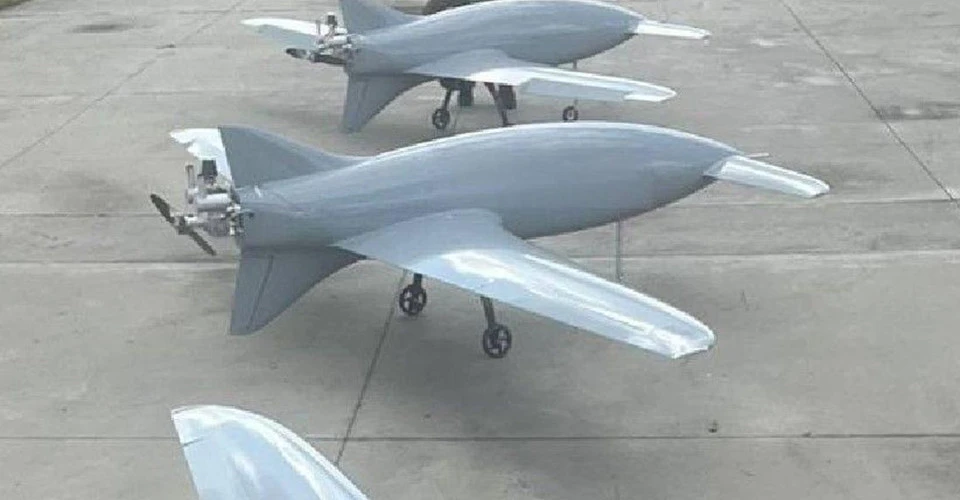
Bober drone: technical characteristics of UAV that Russian air defense cannot handle
Ukraine's Armed Forces are demonstrating that strikes on Russia's rear or energy infrastructure are a game that can be played by two. Ukrainian drones are increasingly attacking Russian regions, and one of the UAVs that terrifies invading troops is the Bober UAV
Espreso tells how the Ukrainian drone was created, how it works, and where it has already been used in Russia.
What is the Bober UAV and what it looks like
Bober or Beaver is a Ukrainian long-range barrage munition manufactured by Ukroboronprom. The first evidence of a drone appeared in 2022, when blogger Ihor Lachenkov announced a joint fundraiser with the Govor Help charity foundation to buy a Ukrainian-made strike UAV for the Main Intelligence Directorate.
The Bober is built according to the aerodynamic design of a duck. Thanks to this design, the drone can easily change altitude and maneuver well in the air, which increases its chances of bypassing enemy air defense.
The Polish portal Defence24 calls the Bobers 'Ukrainian Shaheds'.
"We don't know much about the airframe itself, but the sound of the engine suggests that it is a combustion unit that makes a characteristic rumble. Therefore, they can be called the equivalent of Iranian Shaheds, which have been massively used by the Russians to attack Ukrainian cities to spread terror," Polish observers wrote in August 2023.
The drone makes a characteristic "moped" sound because, like the Shahed, it flies thanks to an internal combustion engine located in the rear of the fuselage. In addition, the Bober is a 'kamikaze' drone, i.e. a single-use drone.
Lanchenkov first showed a photo of the device on May 1, 2023, noting that by that time "the enemy had already suffered heavy losses due to the appearance of these UAVs." Detailed photos were first published in July by volunteers Serhiy Prytula and Serhiy Sternenko.

Serhiy Prytula. Photo: Twitter
By the way, detailed photos and videos were made public only after public photos of the drone were posted by officials. On July 25, the Bober UAV was demonstrated in Kyiv at a forum where Prime Minister Denys Shmyhal said that UAH 40 billion had been allocated to drone manufacturers.
How the Bober drone works
Defense Express observers believe that the Ukrainian 'kamikaze' drone deserves attention primarily because of the pragmatic solutions used in its development. For example, when launching a drone, you can do without a catapult or rocket booster, instead using a runway. The runway, as a prerequisite, may be a disadvantage of the drone, but experts point out that similar Iranian drones can be launched from the roof of a car if it accelerates to the takeoff speed of the drone.
"The very smooth contours of the body, which is especially carbon fiber, as well as the small size of the object suggest a small effective scattering area, which makes this drone difficult enough to detect by radar stations," Defense Express writes.
Most likely, the navigation system has not only a satellite system, but also an inertial system. Military observers emphasize that this is evidenced by the air pressure receiver, which allows measuring the speed and altitude of the drone. Such a system allows to reduce the effectiveness of Russian electronic warfare, because the drone will continue to move along a given route without satellite navigation. However, this may reduce the accuracy of the strike.
Tactical and technical characteristics
- Length - 2.5 meters,
- Wingspan - 2.5 m,
- Empty weight - 150 kg,
- Warhead - 20 kg,
- Flight range - 1000 km,
- Maximum flight time - 7 hours,
- Maximum speed - 200 km/h.
The use of Ukrainian UAVs
The Bober drone was first spotted in the Tula region in March of this year. This type of UAV was also used to strike the Ilya oil refinery near Krasnodar in early May.
On May 30, they struck Moscow and the Moscow region. According to eyewitnesses, the southwestern part of the Russian capital was attacked by about three dozen drones, while the Russian Defense Ministry claimed that there were only eight. The Russian ministry claimed that the attack was carried out by "aircraft-type unmanned aerial vehicles".
On July 24, the drones were spotted attacking a building that was later identified as one of the facilities of the Russian General Staff. On July 30, one of the drones hit the 10th floor of the IQ-Quarter office building complex, which houses the offices of the Russian Ministry of the Interior.
On the night of August 22, another drone attack on Moscow took place. It became known that all airports in the Moscow region were closed. It is used in cases of detection of unknown aircraft or other objects in the sky that may pose a threat to aviation flights.
It is obviously a Bobet 'kamikaze' drone, as the videos released show that one of the drones has a distinctive non-shooting duck nose with a powerplant that drives a push propeller at the back.
The largest-scale attack by Ukrainian drones took place on August 30. Ukrainian drones struck the temporarily occupied Sevastopol, Moscow, Ryazan, Kaluga, Bryansk, and Orel regions. The attack on the airfield in Pskov, 700 kilometers from the Ukrainian border, suggests that Beaver UAVs were used, the Militarnyi portal wrote.
How Ukrainian Bober drones affect the war against Russian forces
Observers of the Polish military portal Defence24 emphasize that the effective strikes on Moscow have crossed out all the assurances or even demonstration videos of the Russians about the effectiveness of systems like Pantsir-S1, showing that Russian air defense is not reliable enough.
Defense Express also points out that Russian air defense has proved incapable of repelling drone attacks on Moscow. And this is despite the fact that the Russian army demonstratively deployed anti-aircraft weapons right within Moscow in early 2023. In particular, Pantsir systems on government buildings and S-400 air defense systems in residential neighborhoods on the outskirts. Probably, the Russian military command is hesitant to give the command to start shooting at the drones that were detected already over the city, while the Bobers regularly break through the echeloned air defense barriers to the center of the Russian capital. Instead, electronic warfare is proving to be ineffective.
It is also worth noting how much damage the Bober UAVs cause to the enemy. Defense Express editor-in-chief Oleh Katkov told Espreso that after drone strikes on Pskov airport in August, 5.5% of the total number of Il-76 aircraft in Russia were disabled – 4 of them were destroyed and 3 more were critically damaged.
"This aircraft is the basis for the Russian military transport aviation and is used not only by the Russian airborne forces. During standard operation, it carries military cargo. The Russians are trying to transport their own high-tech products with this aircraft. Last year, the Russians reported a record production of 5 Il-76s per year. That is, Ukraine managed to cancel the work of the company producing the Il-76 for the year with a drone strike," Katkov said.
In total, the joint secret project of the Main Intelligence Directorate, the Come Back Alive Foundation, and blogger Ihor Lachenkov, Black Box, as of June 5, has caused more than USD 700 million in losses to Russia, the intelligence press service said. One of the four drones developed by the project is the Bober.
The Militarnyi portal calculated that for USD 700 million, the aggressor country could buy 19 Su-34 fighter-bombers or three Steregushchy corvettes of the 20380 project.
"Ukrainian society has created a "weapon of revenge" with its own hands that can hit enemy targets at a distance of more than 400 kilometers from Ukraine's borders. Their small size, quiet operation, and low altitude allow these drones to pass undetected through enemy air defense systems, and the objects they hit compensate for their cost a hundredfold," Militarnyi writes.
As for the cost of a drone, in July 2023, Serhiy Prytula's Charitable Foundation ordered 50 Beaver drones for UAH 200 million (approx. USD 5.4 million). Thus, one drone costs about USD 108,000 (approx. UAH 4 million).
Prytula himself, presenting the photographs of the Bober 'kamikaze' drone, accompanied them with the following words:
"Moscow residents! Shudder from the sirens. Go to the bomb shelters. Watch the planes arrive at strategic targets. Don't sleep because of air defense. Go to the funerals of your loved ones. And at the same time, don't get tired of asking yourself: "Why?".
- News













































